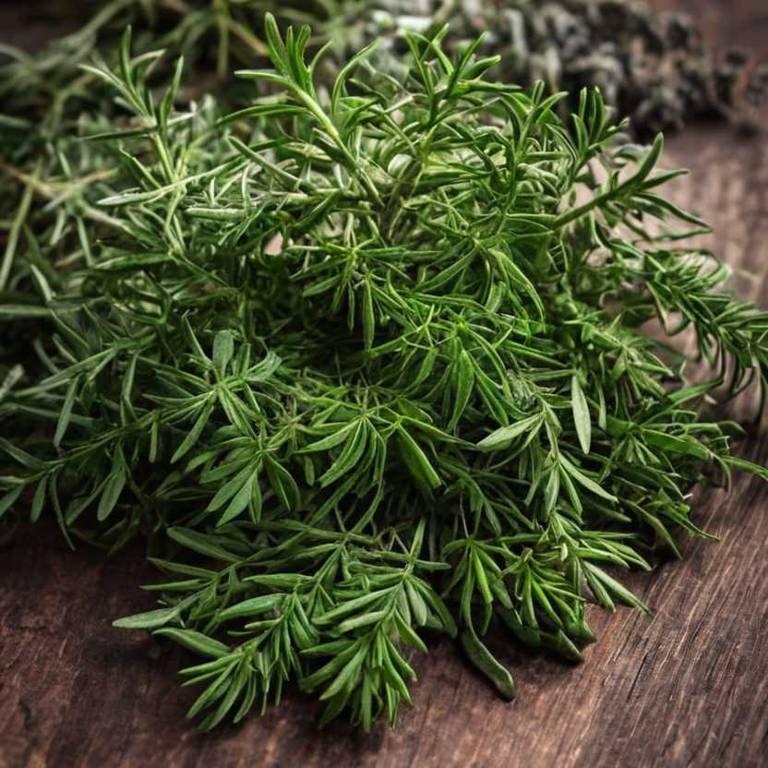10 Best Abies Balsamea Preparations

The best medicinal preparations of Abies balsamea are teas, tinctures, decoctions, syrups, and capsules, each offering unique benefits for various health conditions.
Teas made from the dried needles are commonly used to soothe respiratory issues and promote relaxation.
Tinctures provide a concentrated form of the herb, often used for its anti-inflammatory and antimicrobial properties.
Decoctions involve boiling the bark or needles to extract its active compounds, making it effective for digestive support.
Syrups and capsules offer convenient and palatable options for regular use, supporting immune health and respiratory wellness.
Below there's a list of the 10 best herbal preparations of abies balsamea for medicinal purposes.
1. Teas
Abies balsamea teas is commonly used to treat respiratory conditions such as coughs, bronchitis, and sore throats due to its soothing and anti-inflammatory properties.
It is also utilized for its potential to alleviate symptoms of colds and flu, as well as for its antiseptic and expectorant effects. The most common medicinal uses include relief from congestion, reduction of inflammation in the airways, and support for immune function. Bioactive constituents such as terpenes, flavonoids, and phenolic compounds contribute to its medicinal properties by exhibiting antimicrobial, anti-inflammatory, and antioxidant activities.
These components help explain its traditional use in herbal medicine for respiratory and immune support.

2. Tinctures
Abies balsamea tinctures is commonly used to treat respiratory conditions such as coughs, bronchitis, and sinus infections due to their antimicrobial and anti-inflammatory properties.
These tinctures are also used to alleviate pain and reduce inflammation in conditions like arthritis and muscle aches. The most common medicinal uses include treating colds, sore throats, and skin infections. The bioactive constituents responsible for these effects include terpenes, essential oils, and flavonoids, which have antimicrobial, antioxidant, and anti-inflammatory properties.
Additionally, the tinctures may help in promoting wound healing and supporting the immune system.

3. Decoctions
Abies balsamea decoctions is commonly used to treat respiratory conditions, such as coughs, bronchitis, and sore throats, due to its expectorant and anti-inflammatory properties.
This herbal preparation is also used to alleviate symptoms of colds and flu, as it helps to clear mucus and reduce congestion. Additionally, it has been traditionally employed to support skin health and treat minor wounds due to its antimicrobial and astringent effects. The bioactive constituents responsible for these medicinal properties include essential oils like alpha-pinene and camphor, as well as resins, flavonoids, and tannins, which contribute to its therapeutic effects.
These compounds work together to provide antimicrobial, anti-inflammatory, and expectorant actions, making the decoction a valuable remedy in traditional medicine.

4. Syrups
Abies balsamea syrups is commonly used to treat respiratory conditions such as coughs, bronchitis, and asthma due to its soothing and expectorant properties.
The syrup is also used to alleviate symptoms of colds, sore throats, and nasal congestion. It is often valued for its ability to reduce inflammation and ease breathing. The bioactive constituents responsible for these effects include essential oils, terpenes, and flavonoids, which have antimicrobial, anti-inflammatory, and mucolytic properties.
These compounds work together to support the body's natural healing processes and provide relief from various respiratory ailments.

5. Capsules
Abies balsamea capsules is commonly used to support respiratory health, alleviate inflammatory conditions, and promote wound healing.
They are frequently employed to treat ailments such as bronchitis, asthma, coughs, and skin infections. The bioactive constituents responsible for these effects include terpenes, flavonoids, and phenolic compounds, which possess anti-inflammatory, antimicrobial, and antioxidant properties. These compounds work synergistically to reduce inflammation, combat pathogens, and enhance immune function.
As a result, Abies balsamea capsules are valued in traditional and complementary medicine for their broad therapeutic potential.

6. Lozenges
Abies balsamea lozenges is commonly used to relieve symptoms of respiratory tract infections, such as coughs, sore throats, and bronchitis.
These lozenges are also used to soothe inflammation and irritation in the throat, making them popular for treating colds and flu. The most common medicinal uses include alleviating sore throat pain, reducing cough frequency, and easing nasal congestion. The bioactive constituents responsible for these effects include essential oils, terpenes, and flavonoids, which possess antimicrobial, anti-inflammatory, and expectorant properties.
These compounds work together to provide relief from respiratory discomfort and support overall immune function.

7. Oils
Abies balsamea oils is commonly used to treat respiratory conditions, skin infections, and inflammatory disorders due to its antimicrobial and anti-inflammatory properties.
These oils are frequently applied in aromatherapy to alleviate symptoms of colds, coughs, and bronchitis. They are also used topically to address wounds, eczema, and muscle pain. The bioactive constituents responsible for these effects include terpenes, monoterpenes, and sesquiterpenes, which have potent antioxidant and antimicrobial activities.
Additionally, the presence of alpha-pinene and camphor contributes to its expectorant and analgesic effects.

9. Creams
Abies balsamea creams is commonly used to treat skin irritations, inflammation, and minor wounds due to its anti-inflammatory and antimicrobial properties.
These creams are often applied topically to alleviate symptoms of eczema, psoriasis, and fungal infections. The most common medicinal uses include reducing skin inflammation, promoting healing, and preventing infections in minor cuts and abrasions. The bioactive constituents responsible for these effects include terpenes, flavonoids, and essential oils, which possess antimicrobial, anti-inflammatory, and analgesic properties.
These compounds work synergistically to enhance the therapeutic benefits of the herbal preparation.

10. Linctuses
Abies balsamea linctuses is commonly used to relieve respiratory conditions such as coughs, bronchitis, and sore throats.
This herbal preparation is often employed to soothe irritation in the respiratory tract and reduce mucus production. The most common medicinal uses include treating coughs, colds, and inflammatory respiratory diseases. The bioactive constituents responsible for its medicinal properties include volatile oils, terpenes, and resins, which have anti-inflammatory, antiseptic, and expectorant effects.
These compounds work together to ease breathing and promote the expulsion of mucus from the lungs.
